Unraveling The Mystery Of The Phoenix Bird – Symbol Of The Sun And Eternal Rebirth Of Life
A. Sutherland - AncientPages.com - What is behind the story of Phoenix, the bird of immortality that rises from the ashes?
The Phoenix is known in various forms and names throughout the Middle and the Far East, the Mediterranean, and Europe. It is a symbol of resurrection.
Phoenix - Mythological Bird. In Greece, the phoenix rising from flames was the symbol of the First Hellenic Republic under Ioannis Kapodistrias, the Mountain Government and the Regime of the Colonels. Imge credit: Diafora - CC BY-SA 3.0
The name Phoenix may have come from the Greek phoînix and may be related to phoinos (blood-red).
In ancient Egypt, the Phoenix was called the "Lord of Jubilees" and was considered the ba (spirit) of the Sun God Ra. In Mesopotamia, the Phoenix is symbolized by the horned and winged solar disk. Alchemists used the Phoenix to represent the color red and the successful end of a process.
The medieval Hermeticists used the Phoenix as a symbol of alchemical transmutation.
Legends tell that the Phoenix had red and gold feathers, the rising Sun's color. It had a wonderfully melodious voice, which became mournful with approaching death. Other creatures were then so overcome by its beauty and sadness that they fell dead.
Ornament from a book of typographic specimens, 1870. Image source
From ancient texts, we learn that only one Phoenix could live at a time. Hesiod, the Greek poet, wrote that the Phoenix lived nine times the lifespan of the long-living raven. According to other sources, the Phoenix can live up to 97,200 years.
Tacitus (AD 56 – c. 120), a Roman historian and politician, is widely regarded as one of the prominent Roman historians by modern scholars. He said that "in the consulship of Paulus Fabius (AD 34), the miraculous bird known to the world by the name of the Phoenix, after disappearing for a series of ages, revisited Egypt. It was attended in its flight by various birds, all attracted by the novelty and gazing with wonder at its beautiful appearance."
Also, Herodotus' words are beautiful when he talks about the amazing Phoenix: "I have not seen it myself, except in a picture. Part of his plumage is gold-colored, and part crimson; and he is for the most part very much like an eagle in outline and bulk..."
 Egyptian Ba bird - the "ba," depicted as a human-headed falcon, was a spiritual aspect of one's personality. Image credit: Walters Art Museum - Public domain
Egyptian Ba bird - the "ba," depicted as a human-headed falcon, was a spiritual aspect of one's personality. Image credit: Walters Art Museum - Public domain
Pliny beliueved that there was to be only one Phoenix in the world, purple in color, with a golden head and a blue-pink tail, and with a crest of feathers on its head. He lived for 540 years, and then, it was time for him to built a nest of spices, in which he died. Tradition says that the Phoenix fed only on air, harming no other creature. It lived a solitary life in a faraway land, coming to a human-inhabited land only when it was ready to die. If the bird was injured, it possessed the power to heal itself.
When the Phoenix reaches the end of his life, it sets the nest and itself on fire and is burned to ashes. Shortly, the Phoenix rises again and begins its life anew. In some traditions, the new Phoenix gathers the old ashes and takes them to the Egyptian city of Heliopolis to offer them to the Sun God. The ashes laid on the Altar of the Sun are said to have the power to bring a dead man back to life.
When the Roman emperor Elagabalus (203-222) tried to become immortal, he dined off a bird of paradise, sent in place of a phoenix, but the substitute did not work. Instead, the emperor was murdered shortly afterward.
Death of the Phoenix burning in flames (medieval Aberdeen Bestiary). Image credit: Phoenix7777 - CC0 1.0
Unfortunately, there is little information about the Phoenix, the bird of flames.
Some people firmly believe that it is God's pet, let loose on the world now and again to give the people a glimpse of God's powers. Others swear that the Phoenix is a God, the incarnation of Foiros, bringing peace to the righteous and swift retribution to the evil and corrupt.
Yet another group says it is not more than a near-extinct animal, no different from a swan or dove. So far, scholars have been unable to trace the true origin of the Phoenix legend. It is believed, but not confident, that the legend came from the Orient and was adopted by Sun-worshipping priests of Heliopolis as an allegory of the Sun's daily setting and rebirth.
In Christianity, the resurrected Phoenix became a famous symbol for how Jesus Christ has risen from the grave.
The legend of this beautiful supernatural creature has survived for centuries. The Phoenix never died permanently. Legend says it existed when the universe was created.
It knows the secrets of life and reincarnation, knowledge even the most powerful gods do not possess.
Written by – A. Sutherland - AncientPages.com Senior Staff Writer
Updated on November 6, 2023
Copyright © AncientPages.com All rights reserved. This material may not be published, broadcast, rewritten or redistributed in whole or part without the express written permission of AncientPages.com
Expand for referencesReferences:
Nigg J. The Phoenix: An Unnatural Biography of a Mythical Beast
Bulfinch, Thomas. Bulfinch's Mythology
Pliny the Elder: Natural History, Books XXX
More From Ancient Pages
-
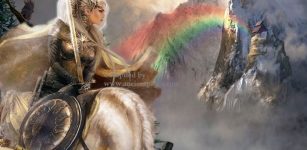 Mysterious Valkyrie Eir Remains An Enigma In Norse Mythology
Featured Stories | Apr 4, 2018
Mysterious Valkyrie Eir Remains An Enigma In Norse Mythology
Featured Stories | Apr 4, 2018 -
 First Bronze Age Settlement Predating The Phoenicians Discovered In Maghreb
Archaeology | Mar 5, 2025
First Bronze Age Settlement Predating The Phoenicians Discovered In Maghreb
Archaeology | Mar 5, 2025 -
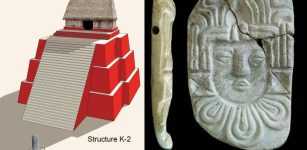 Fire-Burning Event At The Maya Kingdom Of K’anwitznal Was A Reaction To Regime Change
News | Apr 19, 2024
Fire-Burning Event At The Maya Kingdom Of K’anwitznal Was A Reaction To Regime Change
News | Apr 19, 2024 -
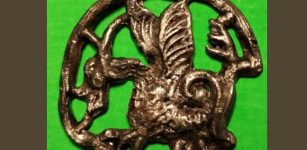 Medieval Pilgrim’s Badge (‘Pilgrim’s Sign’) Depicting A Basilisk Dragon In A Circle Discovered In Southeastern Poland
Artifacts | Mar 5, 2024
Medieval Pilgrim’s Badge (‘Pilgrim’s Sign’) Depicting A Basilisk Dragon In A Circle Discovered In Southeastern Poland
Artifacts | Mar 5, 2024 -
 ‘Viking Disease’ Hand Disorder May Come From Neanderthal Genes
Archaeology | Jun 14, 2023
‘Viking Disease’ Hand Disorder May Come From Neanderthal Genes
Archaeology | Jun 14, 2023 -
 Shakespeare ‘Borrowed’ Phrases From Little-Known Manuscript – Study Reveals
News | Mar 9, 2018
Shakespeare ‘Borrowed’ Phrases From Little-Known Manuscript – Study Reveals
News | Mar 9, 2018 -
 Previously Unknown Manuscript Reveals New Insight Into Medieval Christian Beliefs In England
Archaeology | Oct 26, 2021
Previously Unknown Manuscript Reveals New Insight Into Medieval Christian Beliefs In England
Archaeology | Oct 26, 2021 -
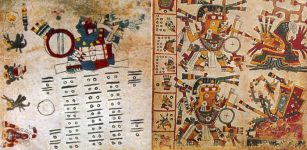 Ancient Codex Cospi: Intriguing Pre-Columbian Ritual Manuscript From Central Mexico
Featured Stories | Aug 10, 2017
Ancient Codex Cospi: Intriguing Pre-Columbian Ritual Manuscript From Central Mexico
Featured Stories | Aug 10, 2017 -
 Rare Upper Paleolithic Human Remains Discovered In The Iberian Peninsula
Archaeology | Aug 12, 2021
Rare Upper Paleolithic Human Remains Discovered In The Iberian Peninsula
Archaeology | Aug 12, 2021 -
 Sweden’s Tanum And Skredsvik Petroglyphs: Thousands Of Spectacular And Intriguing Rock Art
Featured Stories | Aug 28, 2018
Sweden’s Tanum And Skredsvik Petroglyphs: Thousands Of Spectacular And Intriguing Rock Art
Featured Stories | Aug 28, 2018 -
 Beautiful Gold ‘Lynx’ Earrings Discovered In The Ruins Of The Ancient Lost City Of Ani Go On Display In 2023
Archaeology | Dec 29, 2022
Beautiful Gold ‘Lynx’ Earrings Discovered In The Ruins Of The Ancient Lost City Of Ani Go On Display In 2023
Archaeology | Dec 29, 2022 -
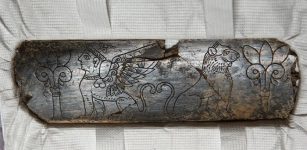 Unique 2,800-Year-Old Ivory Object Unearthed At Hattusa
Archaeology | Nov 14, 2023
Unique 2,800-Year-Old Ivory Object Unearthed At Hattusa
Archaeology | Nov 14, 2023 -
 On this day in history: Li Shimin becomes Emperor Taizong of Tang, China – Sep 4, 626
News | Sep 4, 2015
On this day in history: Li Shimin becomes Emperor Taizong of Tang, China – Sep 4, 626
News | Sep 4, 2015 -
 Where Is The Grave Of Queen Boudica?
Ancient History Facts | Aug 15, 2017
Where Is The Grave Of Queen Boudica?
Ancient History Facts | Aug 15, 2017 -
 Jackalope – Are Mythical Horned Hares Real?
Featured Stories | Mar 11, 2019
Jackalope – Are Mythical Horned Hares Real?
Featured Stories | Mar 11, 2019 -
 Controversial Theory Suggests Atlantis Was In Scandinavia – Surprising Evidence Presented By Ancient Writer
Ancient Mysteries | Sep 5, 2018
Controversial Theory Suggests Atlantis Was In Scandinavia – Surprising Evidence Presented By Ancient Writer
Ancient Mysteries | Sep 5, 2018 -
 Achaemenid Empire Was The World’s Largest Ancient Empire
Ancient History Facts | Mar 26, 2016
Achaemenid Empire Was The World’s Largest Ancient Empire
Ancient History Facts | Mar 26, 2016 -
 Secrets Of Cheops’ Pyramid: Does The Newly Found Chamber Contain An Iron Throne?
Archaeology | Jan 13, 2018
Secrets Of Cheops’ Pyramid: Does The Newly Found Chamber Contain An Iron Throne?
Archaeology | Jan 13, 2018 -
 Oldest Evidence Of Maya Calendar Discovered In Guatemala
Archaeology | Feb 6, 2023
Oldest Evidence Of Maya Calendar Discovered In Guatemala
Archaeology | Feb 6, 2023 -
 Early Humans May Have First Walked Upright In The Trees 7 Million Years Ago
Human Beginnings | Dec 17, 2022
Early Humans May Have First Walked Upright In The Trees 7 Million Years Ago
Human Beginnings | Dec 17, 2022



